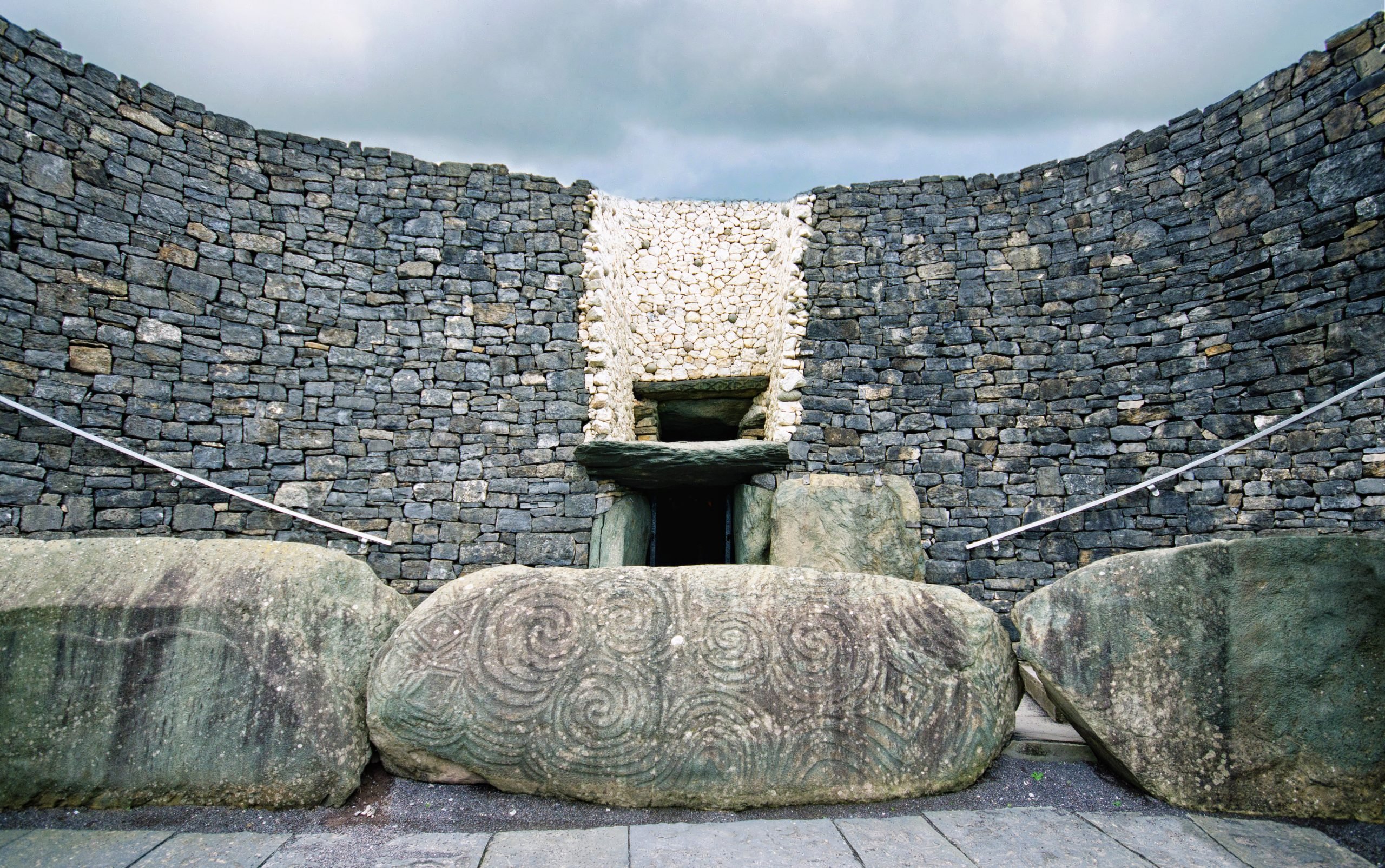
“Brought to a brumal standstill, here I lie / Obliquely floored, mouth curbed by stones that speak / In pick-dressed spirals, egghead sucked bone dry, / Waiting for dawn inside my skull to streak.” This is how the Irish poet Richard Murphy described Newgrange in his 1985 poem of the same name, paying homage to one of the oldest—and biggest—prehistoric structures in all of Europe.
Located in Brú na Bóinne, a historical park north of Dublin, Ireland, Newgrange is thought to have been built around 3,200 B.C.E., making it 1,000 years older than Stonehenge and 500 years older than the Great Pyramids of Giza.
Even more impressive than Newgrange’s age is its size. The kidney-shaped mound covers an area of 15,000 square feet, and measures 43 feet high and 279 feet across. Inside is a 62-foot-long passage leading to a cruciform chamber with a corbelled roof designed to redirect water seepage from the cairn above, keeping the structure’s interior warm and dry. It’s one of many ingenious techniques used by the builders to ensure their creation would stand the test of time.
Newgrange in County Meath, Ireland. Photo: Michael Nicholson/Corbis via Getty Images.
Speaking of the builders, archaeologists believe Newgrange was the work of wealthy farming communities that lived around Brú na Bóinne during the late Stone Age. Irish legend has it that the mound was meant to serve as the burial place of the Tuatha Dé Danann, a pantheon of pre-Christian Gaelic gods and demigods.
Most of what we know about these farmers comes from the construction of Newgrange itself. Their building techniques suggest they were both affluent and knowledgeable, while engravings found around Newgrange and other nearby neolithic structures offer insight into their culture and cosmology. Inside the cruciform chamber, archaeologists encountered a tri-spiral design that has been found across prehistoric Ireland.
Previously classified as a Celtic design, its presence at Newgrange—dating to at least 2,500 years before the Celts came to Ireland—suggests an Irish origin instead. Also known as the Triskele, it is thought to symbolize infinity and connection.
To this day, experts aren’t sure what purpose Newgrange served. Following the lead of Irish mythology, some believe it was indeed intended as a tomb. Others speculate that it didn’t serve a practical purpose at all, but was—in the spirit of the Triskele—envisioned as a symbol of life overcoming death.
Newgrange in County Meath, Ireland. Photo: DeAgostini/Getty Images.
The only thing everyone agrees on is that the mound marked the end of the summer solstice and the beginning of the new year. The reason they agree on this point is that Newgrange is constructed in such a way that between December 19 and 23, sunlight falls right through an opening on the roof, illuminating the passageway inside.
While Newgrange is open to the public, admission during the Winter Solstice is determined by lottery. According to Heritage Ireland, around 30,000 applications are submitted each year. Lotteries are held in September, when just 50 names are drawn and awarded two admissions tickets each.
Sometimes, archaeology gets big. In Huge! we delve deep into the world’s largest, towering, most epic monuments. Who built them? How did they get there? Why so big?